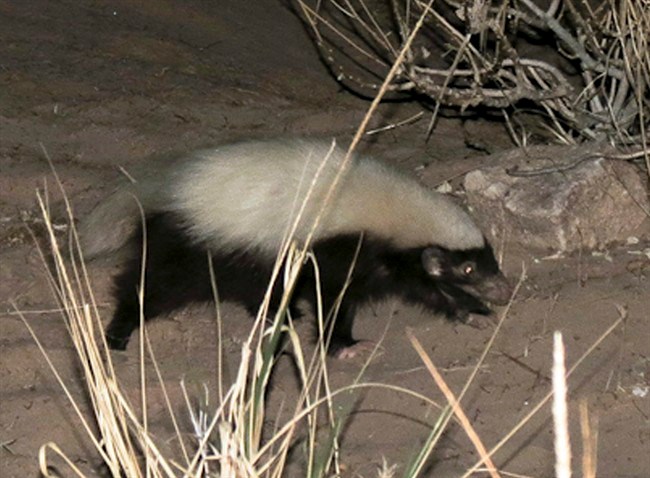FLAGSTAFF, Ariz. - Desert bighorn sheep, river otters and mountain lions, yes. But a hog-nosed skunk at the Grand Canyon? Hardly.
The striped creatures are usually found in southeastern Arizona, Texas and Mexico. But one of them somehow made its way north of the Colorado River last year.
A group of rafters camping along the river in August was headed for bed when they noticed a black-and-white animal in the bushes near one of their tents. Jen Hiebert grabbed her camera, zoomed in and took some pictures.
When the rafters didn't see the skunk listed as one of the animals found at the Grand Canyon, Hiebert sent photos and a note to the National Park Service.
"It was just walking through the canyon, totally ignored us and was just digging away in the sand," said Hiebert, of Moscow, Idaho. "I'm not sure what it was after."
Grand Canyon biologists later confirmed the group's suspicion that it was a hog-nosed skunk.
At first, officials weren't sure whether the skunk was merely visiting the area, or if they should to add it to the list of about 90 mammals that live in the national park. They decided that by listing it — even as extremely rare — people might be on the lookout for more of the skunks, and that could help biologists determine how prevalent they are in the park.
"Obviously it's in the park and there's a photograph of it," Grand Canyon wildlife program manager Greg Holm said. "I guess the question would be, is it going to live out its life here or was it travelling from point A to point B?"
The hog-nosed skunk is just as smelly as the western spotted skunk and the striped skunk, which are also found in the park. But it's distinguished in appearance by its entirely white back and tail, largely naked snout and long claws.
Holm said skunks tend to be solitary animals so it wasn't strange that Hiebert and the others saw just one. The puzzling thing for biologists was how it crossed the Colorado River, which Holm said tends to be a significant barrier to animal movement because of water temperature, the river's flow and its size.
"Whether or not it crossed, swam across, it certainly could," he said. "How else would it get there?"
The other idea is that the skunk came from southern Nevada, travelling east from the north end of Lake Mead through the Grand Canyon, but "it's all speculation," Holm said.



